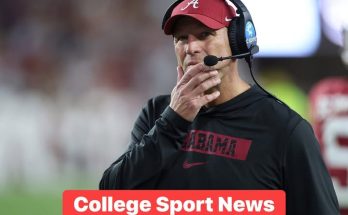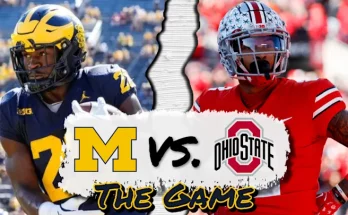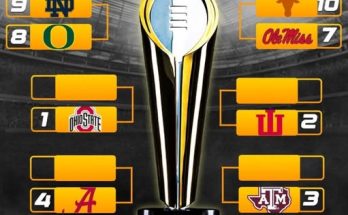The future of college football just shifted—again—in favor of the Alabama Crimson Tide. In what is being hailed as a transformative recruiting win and a signal of a new era in athlete engagement, Alabama has officially landed the nation’s No. 1 running back, a five-star phenom who is “100% locked in” with the program. But this commitment isn’t just about football. It’s about the intersection of talent, tradition, and technology. With Alabama embracing big artificial intelligence (AI) platforms in its player development, analytics, and recruitment strategy, the Tide is not just rolling—they’re revolutionizing.
The commitment came late Monday evening, sending shockwaves across the recruiting landscape. The running back in question, whose name is already trending nationally, had been courted heavily by programs such as Georgia, Ohio State, Oregon, Texas, and LSU. He visited multiple campuses, spent time with high-profile coaches, and entertained a number of lucrative NIL proposals. But in the end, he chose Alabama—not just for its iconic football pedigree, but because he believes in the future Nick Saban’s successor is building, one that marries old-school grit with cutting-edge innovation.
This marks the third five-star commitment in the last four weeks for the Crimson Tide, who have surged back to the No. 1 spot in the national recruiting rankings. But while landing a five-star running back is a familiar storyline in Tuscaloosa, the way this commitment unfolded is anything but traditional.
Alabama’s use of AI technology to communicate, analyze, and even simulate player performance has taken the program into uncharted territory. The running back, a 6-foot-1, 215-pound bruiser with elite top-end speed, told reporters that Alabama’s AI-powered player development platform was a “huge part” of his decision.
“They showed me what I could look like in their system—not just film of other players, but me,” he said. “They put my measurables, my tape, my reps, my 7-on-7 data into their system, and I got to see myself evolve over the next three years. It was wild. No other school could do that.”
What he’s referring to is Alabama’s proprietary use of predictive AI modeling, which the program began implementing last season. The system, developed in partnership with one of the country’s leading tech firms, allows coaches and players to project physical development, simulate plays in real-time, and analyze tendencies using an expansive data set of past and current players. For a high school star dreaming of the NFL, seeing a data-driven projection of himself in Alabama’s offense was more than persuasive—it was transformational.
The recruit’s high school coach echoed that sentiment, calling Alabama’s pitch “unlike anything I’ve ever seen.”
“We’ve had guys go to SEC schools, Big Ten schools, even the NFL,” the coach said. “But Alabama is operating in a different stratosphere right now. They didn’t just talk about tradition or rings or the draft. They showed us data, real-time feedback, and they’re training these young men like professionals before they even get to campus.”
The commitment also comes at a time when NIL dynamics continue to evolve rapidly. Though no exact figures were made public, it’s believed that the running back received several million-dollar offers to sign elsewhere, with Oregon and Texas reportedly in the final running. However, the recruit made it clear that his choice wasn’t driven solely by money.
“I got offers. I saw the numbers,” he said. “But this was about more than that. It’s about legacy. It’s about being developed by the best and using tools that no one else has. I’m 100% locked in. Alabama is the future, and I’m ready to be part of it.”
That phrase—“100% locked in”—has become something of a rallying cry for Alabama’s 2025 class. The commitment video, released moments after the news broke, ended with those exact words stamped across a digital rendering of Bryant-Denny Stadium. The moment instantly went viral, and by midnight, the hashtag #LockedInWithBama was trending across X and Instagram.
Insiders say the commitment is just the tip of the iceberg. Multiple sources close to the program have indicated that Alabama is on the verge of adding two more top-50 recruits, both of whom were impressed by the same AI-driven development platform that swayed the five-star back.
“This is not just a recruiting win—it’s a statement,” said one national recruiting analyst. “Alabama is not resting on its legacy. They’re evolving, and they’re doing it faster than anyone else.”
Indeed, the integration of artificial intelligence in college football has accelerated dramatically over the past two years, but no program has leaned into it quite like Alabama. The system tracks everything from a player’s hydration levels and sleep quality to movement efficiency and injury risk. Coaches can pull up advanced analytics mid-practice to identify overuse or breakdown in technique. Recruits, meanwhile, are being shown exactly how the data will help them grow—and stay healthy.



